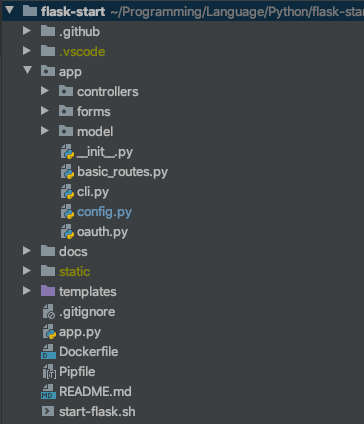An example application with basic ecommerce UI. The project runs on flask and is deployed as a docker container in IBM Cloud Foundry. It uses github actions to deploy the code to CF and is backed by IBM DB2.
REST API written in Python Flask & DB2
- Download & install Python 3.6
- Download & install Pipenv
> python -m pip install -U pip
> pip3 install pipenv# Clone the repository
# Change into the directory
> cd flask-start
# Install all required dependencies with
> pipenv install --deploy --skip-lock
# [Optional Step] If you get a warining stating the virtual environment path dosent exist
> set PIPENV_IGNORE_VIRTUALENVS=1
> pipenv install --skip-lock
# Activate the project virtual environment
> pipenv shellYou can also set the enviroment variables explicity (OPTIONAL)
> cd flask-start
> set FLASK_APP=app.py
> set FLASK_ENV=development
> set SECRET_KEY="SAMPLE_SECRET_KEY"
> set SQLALCHEMY_DATABASE_URI="ibm_db_sa://username:password@hostname:port/databasename"
> set GOOGLE_OAUTH_CLIENT_ID="OAuth Client Id"
> set GOOGLE_OAUTH_CLIENT_SECRET="OAuth Client Secret"
> set FACEBOOK_OAUTH_CLIENT_ID = "OAuth Client Id"
> set FACEBOOK_OAUTH_CLIENT_SECRET = "OAuth Client Secret"
> set GITHUB_OAUTH_CLIENT_ID = "OAuth Client Id"
> set GITHUB_OAUTH_CLIENT_SECRET = "OAuth Client Secret"
> set OAUTHLIB_INSECURE_TRANSPORT=True
> set OAUTHLIB_RELAX_TOKEN_SCOPE=True
> set PORT=5000- Install python from vscode extensions market place (ctrl+shift+x) ms-python.python
- Open the command palette in visual studio (ctrl+shift+P) type
>Python: Select Interpreter - Choose the python interpreter of virtual env
('flask-start': pipenv) - Once that is done check the .vscode folder settings.json if the
python.pythonPathpoints to your virtual env. - To debug the applictaion open Run (ctrl+shift+D) and click on the play button besided Run with Python: Flask selected in the drop down.
Start the app in virtual env shell
> flask runProject Structure
- app.py contains the code call to initiazlie the app via create_app() definition under app/__init__.py
- All the flask app configs are under config.py
- All the blueprints are under controllers
- Model __init__.py contains the database initialization and SQLAlchemy.
Blue-Prints Specifications
- GET: /homepage - app/basic_routes.py
- GET & POST: /login - app/basic_routes.py
- GET & POST: /signup - app/basic_routes.py
- GET: /mobile/{id}
- GET: /mobile/buynow/{id}
- GET: /mobile/addtocart/{id}
- GET: /cart
- GET: /cart/deleteItem/{id} Example curl http://localhost:5000/login
Using flask click, cli commands all tables DDL are created.
> cd flask-start
# To create all tables in the database
> flask init_db
# To drop all tables in the database
> flask drop_db
# To load basic data in the Items Table for homepage.
> flask load_data> cd flask-start
# Build the docker image
> docker build -t shra012/flask-start:latest .
# Run the docker container
> docker run --name flask-start -e FLASK_ENV=development -e FLASK_APP=app.py \
-e SECRET_KEY=SAMPLE_SECRET_KEY -e SQLALCHEMY_DATABASE_URI=ibm_db_sa://username:password@hostname:port/databasename \
-e GOOGLE_OAUTH_CLIENT_ID=OAuth_Client_Id -e GOOGLE_OAUTH_CLIENT_SECRET=OAuth_Client_Secret \
-e FACEBOOK_OAUTH_CLIENT_ID=OAuth_Client_Id -e FACEBOOK_OAUTH_CLIENT_SECRET=OAuth_Client_Secret \
-e GITHUB_OAUTH_CLIENT_ID=OAuth_Client_Id -e GITHUB_OAUTH_CLIENT_SECRET=OAuth_Client_Secret \
-p 5000:5000 shra012/flask-start:latest
# Check the logs
> docker logs -f flask-start
# Cleaup the container
> docker stop flask-start && docker rm flask-startShravankumar Nagarajan
